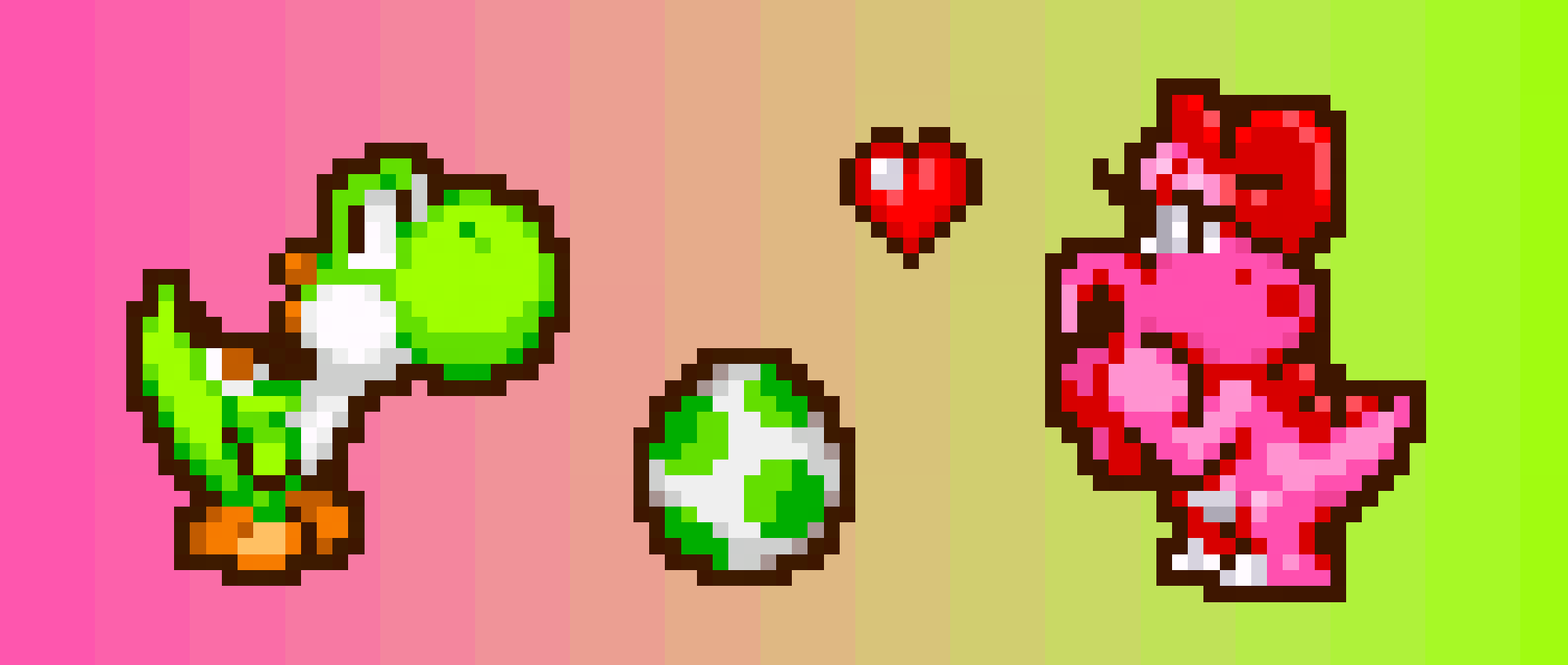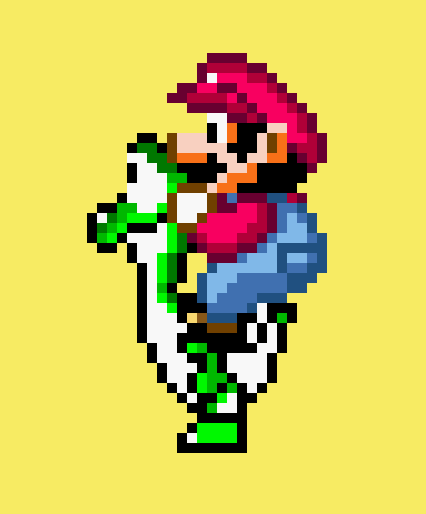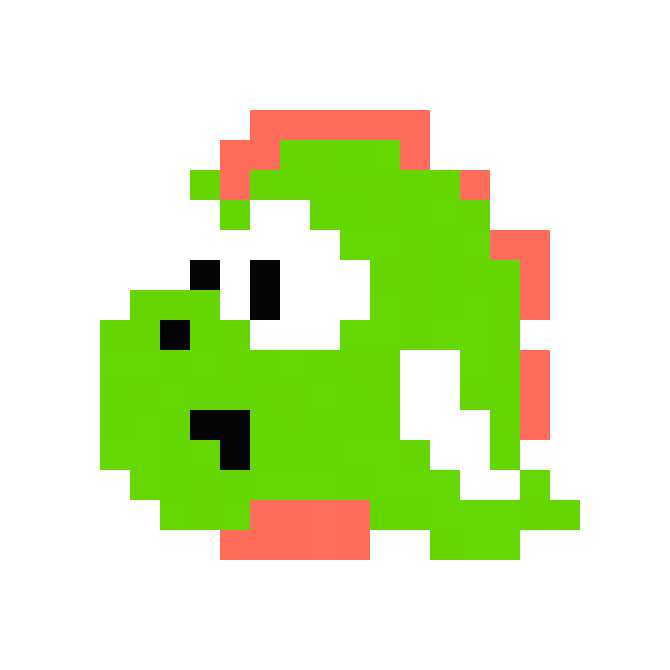Birdo Was Yoshi Before Yoshi Was Yoshi
Video games are lousy with twins, clones, and lookalikes. Pac-Man has Ms. Pac-Man. Ryu has Ken. Scorpion has Sub-Zero. It makes practical sense, especially in the early days of gaming, to move a few pixels around and turn one character into two. After all, Mario only became the Mario Brothers with the introduction of Luigi, who initially was a palette swap of Mario.
I know there is a longstanding myth about Luigi’s name coming from an Italian restaurant or pizza parlor near Nintendo’s Washington headquarters, but unless I’m mistaken, I don’t think anyone has ever proven that this establishment existed or that this is how Luigi got his name. As a result, the closest we have for an explanation is a 1986 Reueters interview in which series creator Shigeru Miyamoto notes that it sounds like the Japanese word for “similar” — 類似, ruiji, as a verb meaning “to be similar to” and as a noun meaning “similarity, resemblance.” It falls just short of Miyamoto saying, “This is *why* we named the character what we did, but it’s a profound point regardless, because it’s that similarity that forever bonds these characters, no matter how much later games tweak them to become more distinct.
One of the less obvious pairs of Mario characters connected in this way is Yoshi and Birdo. You might look at them and think their similarity starts and stops with them both being… if not dinosaurs, then very dinosaur-like creatures. However, several of the traits we associate with Yoshi actually existed in Birdo years before. In fact, while most people who causally play Mario games would probably assume that Yoshi is the prototype on which Birdo is based, it might actually be the other way around.
Birdo first debuted in Doki Doki Panic, which was released on the Famicom in 1987, while Yoshi first debuted in Super Mario World, which dropped initially in Japan in 1990. The idea for Mario to ride some kind of steed, dinosaur or otherwise, goes back even further, to an unspecified point in time after the release of the original Super Mario Bros. in 1985. According to an interview with Miyamoto in the Nintendo Power Mario Mania guide, Nintendo “wanted to have Mario ride a dinosaur ever since we finished the original Super Mario Bros., but it was impossible technically.”
A pixelly Mario riding two different non-pixelly dino buddies.
The concept art included in the guide shows a pixelated Mario, looking a lot like his SMB-era self than anything later, riding two different dinosaur buddies: one more brontosaurus-like, on four legs, and one more ostrich-like, on two legs. I point this out because when I was a kid, I read this design showing the same dinosaur in two different poses. It’s totally not; it’s two different designs layered on top of each other.
In one of Nintendo’s developer interviews promoting the Super NES Classic Mini, the genesis of the idea for Yoshi is placed more toward the production of Super Mario Bros. 3 by Takashi Tezuka, who served as codirector for SMB3 and solo director for SMW, in addition to serving as assistant director and designer for SMB. Explaining that Miyamoto wanted Mario at some point to ride a horse, Tezuka explains, “When we were making Super Mario Bros. 3, [Miyamoto] had drawn a picture of Mario on a horse, and hung it on a wall near where he used to sit. I would look at that and think, ‘I think he wants Mario to ride something.’ When we started making Super Mario World, we were working with the concept of a dinosaur land, so I had [character designer Shigefumi Hino] do art for a kind of reptile.” Hino goes on to explain how what was originally a crocodile-type steed seemed out of place, and the concept of Yoshi evolved to become more influenced by turtles, at which point is clarified that no, despite all appearances, the saddle-looking thing on Yoshi’s back is, in fact, supposed to be a shell.
Beta design for Yoshi looking weirdly like a Bob’s Burgers character, via the Giga Leak via The Cutting Room Floor.
The idea that Nintendo was planning to make Mario ride any animal, much less a dinosaur, is notable for a few reasons, some of which I’ll get to in the miscellaneous notes at the end of this post. The main point, however, is that it makes me think it’s plausible some of the same ideas that materialized in Yoshi actually showed up first in Birdo. For example, they’re both bipedal dinosaurs who attack using eggs. I realize that most dinosaur-types are going to look like each other when they walk upright and are designed to be more on the anthropomorphized and cartoony side, but the egg thing is unique. In fact, all the other video game characters I can think of that use eggs as projectiles are birds. Yoshi didn’t start using his eggs as weapons until Yoshi’s Island, when he’d been redrawn to be slightly less dinosaur-like and even more anthropomorphized in the way Birdo had been from the beginning.
The characters also both challenge gender norms, almost in a complementary way. Aside from wearing a bow and spitting eggs, Birdo is known for being introduced at least initially as a male character who “thinks he’s a girl” and “prefers to be called Birdetta,” per the SMB2 instruction manual. Nintendo has since dropped this aspect of the character, often (but not always) describing the character as female. Whether you consider this to mean that Nintendo retconned away that “thinks he’s a girl” aspect or if this means Birdo is canonically trans, it’s an association her character either had or continues to have.
Translation for the Doki Doki Panic description: “Catherine — Thinks they're a girl and spits eggs and things from their mouth. Calling them Cathy puts them in a good mood.
Yoshi also exhibits behavior that’s atypical for how we usually understand gender: He’s a boy who lays eggs. As an individual character, Yoshi is always described with masculine pronouns, in-universe and otherwise, regardless of the fact that since his debut appearance in Super Mario World, this apparently masculine character produces eggs. Whether you take this to mean that Mario and Luigi (and by extension Nintendo) incorrectly assumed that male Yoshis just lay eggs like it’s no big deal, Nintendo has never seemed especially concerned with the specifics of how Yoshi reproduces. The closest I could find is the Japanese description for Yoshi in Super Smash Bros. Melee, where it says that Yoshi lacks gender and reproduces asexually.
Translation: “Yoshi: These dinosaurs inhabit Yo'ster Isle. They are gentle creatures who are fast on their feet and come in a variety of colors. They are actually neither male nor female. They lay eggs, not only to increase the population of their species, but also to transform what they swallow into eggs. Image via The Mushroom Kingdom’s feature “Mario in Japan: Super Smash Bros. Melee.
Lastly, you might say that the one thing Yoshi has always done that Birdo never has is to act as some kind of beast of burden — an animal buddy that Mario can ride. This is true. Birdo doesn’t carry anyone on her back the way Yoshi does. However, I think you can see an element of this play mechanic that developers had been trying to implement for years in a different SMB2 character: Ostro, the ostrich enemy Birdo was famously mistaken for.
If you go back and look at that concept art for the two SMB-era dinosaur buddies, one looks like a brontosaurus and one looks like an ostrich. In SMB2, Ostro is an ostrich beast of burden that Shy Guys can ride. Technically Mario can ride on Ostro too, it’s just that when he does, he’s standing awkwardly on Ostro’s head, the way he does when he stands on any SMB2 enemy; only the Shy Guys ride on Ostro’s back in the way you see Mario riding the ostrich-like dinosaur in the SMB concept art. I do wonder if this is another example of Nintendo liking this idea but not yet having the technical capability to pull it off the way they wanted — otherwise Mario might have been able to hop onto the back of Ostro too.
I don’t know why a Nintendo of America employee switched Birdo’s name with Ostro’s in the original SMB2 end credits. In fact, it seems pretty weird that anyone thought that the ostrich-looking enemy character should be named anything other than Ostro, But the fact that this happened kinda sorta works as a way to link Birdo to the character who worked in the way Yoshi would years later. And in some cases, it stuck; after all, the name Birdo ended up with in some Italian translations is Strutzi, from struzzo, “ostrich.” (Apparently in others she’s Draghella, which could be a pun on drago, “dragon,” but which also lends itself to another interpretation.)
I like to think of both Birdo and Yoshi as being shaped by concepts that for years were bubbling just under the surface, going back to the earliest days of the Super Mario Bros. games but being held back from implementation because the hardware hadn’t yet caught up to developers’ imaginations. The common perception is that Birdo only became a recurring playable character in spinoff games because the game where she was first playable, the Nintendo 64 installment of Mario Tennis, needed a doubles partner for Yoshi, and she’s been paired with him ever since. That’s probably true, but it nonetheless might also be true that Yoshi ended up the way he did as a result of Birdo — or at least ideas that Nintendo was testing out that ended up manifesting in Birdo first.
Whatever the case, Birdo and Yoshi are connected through their form and function the same way all those other lookalike pairs are, regardless of how advancements in graphics take them further and further away from being mere palette swaps. Maybe most of all, if some of the ideas that ended up in Yoshi first manifested in Birdo, that makes SMB2 less of an outlier in the series, because there’s one more set of ideas connecting it to the games that played differently but still came after.
Miscellaneous Notes
For what it’s worth, the aforementioned Reuters interview in which Shigeru Miyamoto explains the Luigi/ruiji connection also offers an explanation for the origin of Mario’s name that differs from the “Mario Segale as landlord” story, identifying the namesake as “the Italian caretaker at the small New York hotel where Nintendo employees stay in the United States.” Mario Segale, whom Miyamoto confirmed as the inspiration for Mario’s name in 2015, was the landlord owning the Nintendo of America warehouse in Seattle.
It’s commonly stated online that the 1982 arcade game Joust inspired Shigeru Miyamoto to make Mario Bros. That certainly seems like the kind of thing that would be true, although most places that cite that information credit Matt Fox’s The Video Games Guide, and that text simply states that Miyamoto “admits [Joust] inspired him to make Mario Bros. a twin-player experience,” without sorting a specific interview. If that’s true, then it’s also possible that Joust could have inspired Miyamoto to want to put Mario on a mount going back equally as far, meaning Miyamoto’s love for this arcade game resulted in not just the creation of Luigi but also of Yoshi as well. For what it’s worth, Nintendo ended up putting its own spin on Joust again with 1984’s Balloon Fight.
Two Jousters jousting
Arguably there’s another sort of proto-Yoshi in the 1984 Pac-Man-like maze game Devil World, where the player controls Tamagon, a squat dragon creature who eats dots and, if he touches a crucifix, also breathes fire. The game begins with Tamagon hatching from an egg — appropriately, because his name comes from たまご (tamago, “egg”) — and the sound effect of him breaking out of the shell was remade for Super Mario World for the noise of Yoshi’s egg hatching.
Tamagon!
One way that the desire to make Mario ride a horse might have manifested before Super Mario World was in a scrapped concept for Super Mario Bros. 3: Centaur Mario. Without noting that they’d ever planned for Mario to ride a horse, a preview of SMB3 that ran in Nintendo Power’s tenth issue notes the following:
Mr. Miyamoto and the other designers wanted to invent another new, interesting way for Mario to power-up. Their initial ideas tended toward having Mario turn into some sort of creature. A concept that was rejected was having Mario power-up as a centaur (half man, half horse). The idea that they finally settled on was to give Mario a tail and the ability of flight. Their first tail concept, that of a raccoon tail, was the one that finally stuck.
If this was an idea that Nintendo was especially keen on but could make work given the technological limits of the NES, just turning him into a centaur kind of makes sense as a work-around?
It could be just my ignorance when it comes to programming, but since I was a kid, it always confused me how Nintendo said that having Mario ride a dinosaur buddy was not possible on the NES because that very mechanic existed in the Hudson series Adventure Island series. Starting with Adventure Island II, released for the NES in 1991, the game’s hero Master Higgins can ride four different dino buddies — and a fifth in the sequel. Onscreen, it does look a lot like an 8-bit version of Mario on Yoshi, but they do function somewhat differently; Higgins can’t hop off and onto them like Mario can in Super Mario World. The essentially just work like a SMB3 power-up that vanishes the moment you bump into an enemy.
Looks like Yoshi, functions more like a Super Mario Bros. 3-style power-up suit.
Finally, there is a trend in the Mario games where there are two characters who look alike except one is colored red and one is colored green. There are Mario and Luigi, obviously. You see this with the red and green Koopa Troopas in the original SMB, and with the regular mushrooms and 1-up mushrooms as they’d come to be colored in SMB3 and SMW. And if you think about magenta being pretty damn close to red, it works for Yoshi and Birdo, too.











